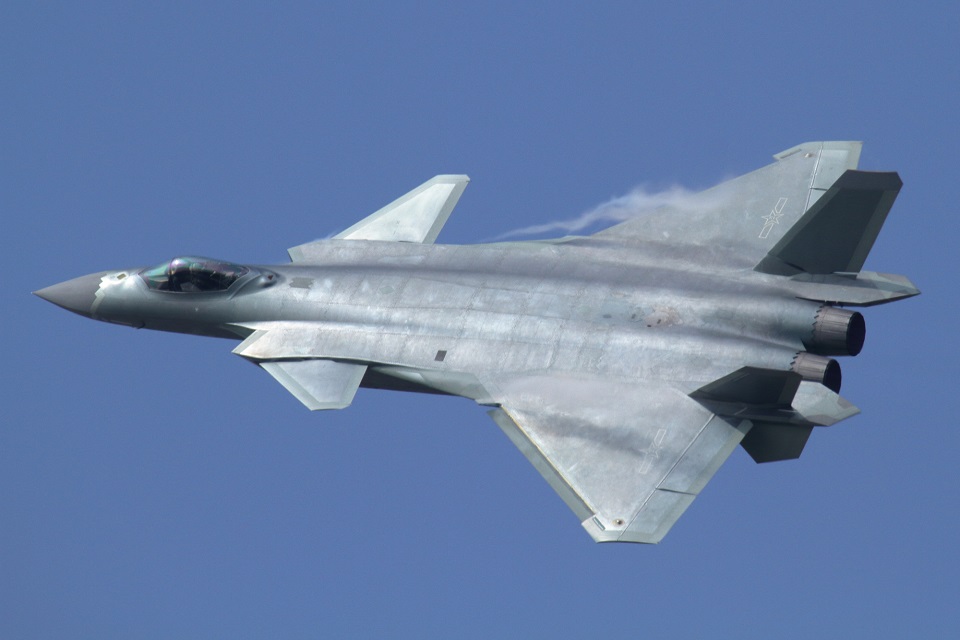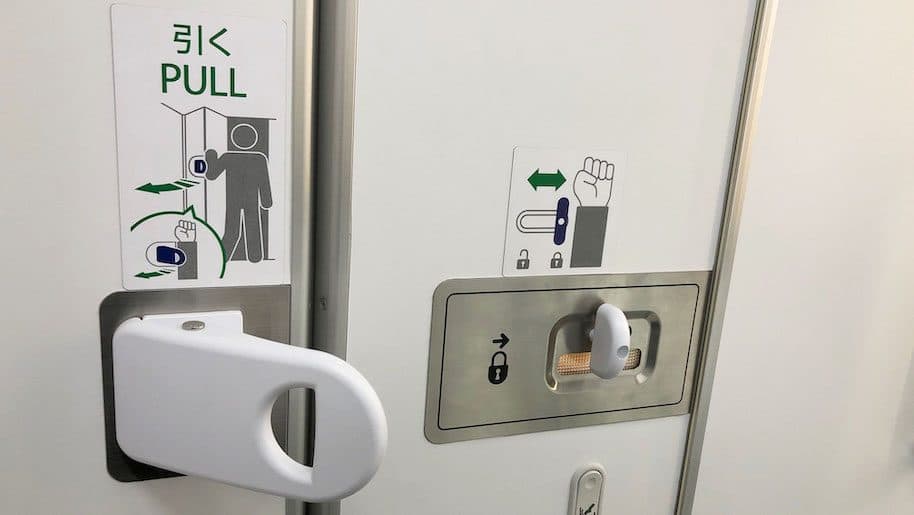Tech
ANA to Install World’s First Hands-free Lavatory Doors on 21 Aircrafts

-
As part of the ANA Care Promise initiative, the doors will help reduce physical contact onboard aircraft and limit the potential spread of pathogens
TOKYO, April 28, 2021 – All Nippon Airways (ANA), Japan’s largest and 5-Star airline for eight consecutive years, has partnered with JAMCO Corporation to develop the world’s first hands-free door that allows easy access to lavatories on its aircraft. The innovative door was developed as part of the ANA Care Promise![]() initiative, and will help limit potential vectors for the transmission of pathogens. The first hands-free doors will be introduced to domestic flights starting May 1.
initiative, and will help limit potential vectors for the transmission of pathogens. The first hands-free doors will be introduced to domestic flights starting May 1.
“Guided by the principles of ANA Care Promise, we have continued to invest in the development and implementation of innovative technologies because the health and safety of passengers and our staff is the top priority,” said Shinichi Inoue, Senior Executive Vice President, Customer Experience Management & Planning. “The hands-free lavatory door is the latest example of us putting this principle into practice as we look for ways to make the travel experience safer and more convenient.”
The new lavatory door is equipped with a large inner door locking knob and an additional handle so that passengers can use their elbows to unlock the door. Because the door mechanism is different to those found on other aircraft, signage has been placed near the lavatory to provide operational instructions.
The hands-free lavatory will be installed on 11 Boeing 787-8 aircraft, two Boeing 787-9 aircraft, and eight Boeing 777-200. The initial installation will be for aircrafts serving domestic routes, while ANA hopes to introduce the system to all domestic and international aircraft in the future.
Runway dining in Boeing 777 proving hit in Japan
To help mitigate the spread of COVID-19 and other pathogens, ANA has instituted the ANA Care Promise program which goes above and beyond the recommendations from public health officials in order to keep passengers and employees healthy. With such efforts, ANA is the first airline in Asia and only the fourth in the world to receive the SKYTRAX Airline Safety 5-Star rating which confirms the effectiveness of ANA Care Promise.

Aerospace
China’s Fighter Jets Turn Wings into Autonomous Drones

In a striking display of aerospace innovation, Chinese engineers have reportedly tested a groundbreaking “combiner” blended-wing stealth aircraft with detachable drone wings.
This transformative technology, reminiscent of fictional “combiner” Transformers, was showcased during a test flight at an undisclosed airport near the Mu Us Desert’s southern edge.
The stealth fighter, equipped with powerful twin-engine turbofans and a sleek delta-wing design, demonstrated unprecedented versatility. During the flight, segments of its wings detached, seamlessly transforming into two separate “flying wing” drones powered by electric fans.
This capability marks a significant leap in aerial warfare, enabling the fighter to deploy autonomous drones mid-flight for strategic operations.
Future stealth fighters will prioritize integration with drones
Yang Wei, chief designer of China’s J-20 stealth fighter, emphasized that future iterations will prioritize seamless integration with drones. The development includes plans for a two-seater variant of the J-20 to enhance operational coordination with unmanned aerial vehicles (UAVs), reflecting China’s strategic focus on combined arms tactics.
The next-generation stealth fighter design integrates two drones directly into the aircraft’s delta wing structure, departing from earlier attempts that fixed drones to wingtips.
This innovative “rear edge docking configuration,” connecting leading edges of the drones to the fighter’s trailing edge, enhances stability during separation. However, it poses challenges such as managing significant changes in the aircraft’s center of gravity and aerodynamic balance.
FCC-100 flight control computer ensures precise control
To address these complexities, Du’s team developed advanced algorithms capable of analyzing and compensating for disturbances like wind changes during drone separation. Both the fighter and the drones utilize the cutting-edge FCC-100 flight control computer from Northwestern Polytechnical University, ensuring precise control and maneuverability.
While specific details about the test flight date remain classified, the project signifies remarkable advancements in aircraft stability and control. These developments pave the way for practical applications in future combat scenarios.
Chinese scientists are also exploring additional technologies like plasma stealth and advanced airflow management to further enhance the capabilities of their next-generation fighters.
-

 Travel1 week ago
Travel1 week agoAir India to Expand US Operations with Three New Routes After a Decade
-

 Travel2 weeks ago
Travel2 weeks agoWhy We Should Avoid These Stamps in a Passport
-

 Airlines1 month ago
Airlines1 month agoInvestigations Reveal Fake Chinese Titanium in Boeing and Airbus Jets
-

 Tech4 weeks ago
Tech4 weeks agoChina’s CATL Plans 1,800-Mile Electric Plane Launch by 2027
-

 Airport3 days ago
Airport3 days agoTop 10 Largest Airports in the World by Size
-

 Aerospace4 weeks ago
Aerospace4 weeks agoChina’s Fighter Jets Turn Wings into Autonomous Drones
-

 Airlines4 days ago
Airlines4 days agoAir India Rolls Out A350s for Delhi-New York JFK and Newark Routes
-

 Defence3 weeks ago
Defence3 weeks agoBoeing Enhances Chinook with New Engines and Block II Upgrades at $96 Million









